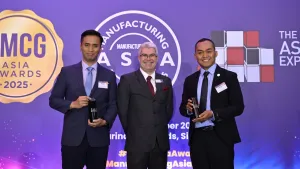Indonesia's production surge challenges Congo's cobalt dominance
As Indonesia ascends in cobalt production, the global landscape shifts, predicting a diverse supply chain by 2030.
While the Democratic Republic of Congo (DRC) still produces the most cobalt globally, countries like Indonesia are quickly catching up and could take the lead.
Vinneth Bajaj, Project Manager at Mining Intelligence for GlobalData, said that the global cobalt industry is on the brink of its fourth consecutive year of growth, with an expected increase of approximately 6.5% in 2024 alone.
This growth, while moderate compared to previous years, indicates a positive and upward trend in global cobalt production, bolstered significantly by contributions from the DRC and, increasingly, Indonesia.
"The DRC currently produces around 70% of the world's cobalt. However, Indonesia's cobalt industry has shown remarkable growth in recent years, transforming from a non-contender to the second largest cobalt producer worldwide," Bajaj stated.
This rapid ascension, he noted, is largely due to Indonesia's rich nickel mines, which have begun producing cobalt as a byproduct, leveraging the country's substantial nickel reserves.
The rise of Indonesia in the cobalt production arena is not just a testament to its vast nickel resources but also signals a significant shift towards a more geographically diverse cobalt supply chain. This diversification is critical as global demand for cobalt, primarily driven by the expansion of EV fleets, continues to surge.
"The combined effect of rising demand and the emergence of new players like Indonesia is making a more significant shift towards a geographically diverse cobalt supply chain," Bajaj elaborated.
Looking forward, the global cobalt market is expected to witness a compound annual growth rate (CAGR) of 4.1% between 2025 and 2030. This growth is not only a reflection of the increasing demand for cobalt but also of the strategic investments in global mining projects.
Beyond the DRC and Indonesia, countries such as Australia, Russia, and Canada are positioned to be among the top contributors to the global cobalt supply, collectively accounting for over 30% of the global total by 2030.
"It will be very interesting to see whether the advancements in battery technologies that are aimed to reduce cobalt content can create concerns about the global supply constraints," Bajaj reflects, highlighting the dual nature of opportunities and challenges that lie ahead.












